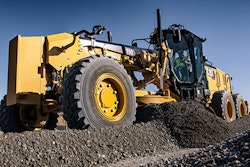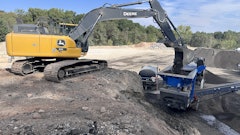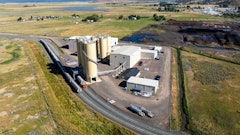
The U.S. Department of Transportation’s Federal Highway Administration announced the Carbon Reduction Program (CRP) that unlocks $6.4 billion in formula funding for states and localities over five years. Created under the President’s Bipartisan Infrastructure Law, the CRP will help states develop carbon reduction strategies and address growing climate concerns.
The Carbon Reduction Program will fund a wide range of projects designed to reduce carbon dioxide emissions from on-road highway sources — from installing infrastructure to support the electrification of freight vehicles or personal cars, to constructing Bus Rapid Transit corridors, to facilitating micro-mobility and biking.
The FHWA says that the types of projects, which are determined at the state and local level but could be supported with federal funding, include zero emission vehicles and facilities, projects that support congestion pricing and travel demand strategies; truck stop and port electrification systems to reduce the environmental impacts of freight movement and carbon dioxide emissions at port facilities; and public transportation projects such as the construction of bus rapid transit corridors or dedicated bus lanes. Micro-mobility and electric bike projects, including charging infrastructure, may also be eligible.
Asphalt's Role in CRP
The CRP guidance makes low-carbon pavement technologies eligible for this important program thanks to the work done by the National Asphalt Pavement Association (NAPA).
“NAPA worked to bring a coalition of stakeholder groups together to advocate for this,” NAPA executive vice president for advocacy Jay Hansen says. “It opens opportunities for our industry to provide carbon-reduction solutions for the citizens and communities we serve across the country.”
The CRP guidance includes low-carbon asphalt pavements as follows:
Sustainable pavements technologies that reduce embodied carbon during the manufacture and/or construction of highway projects could be eligible for CRP if a lifecycle assessment (LCA) demonstrates substantial reductions in CO2 compared to the implementing Agency’s typical pavement-related practices. The LCA Pave Tool can be used to assess the CO2 impacts of pavement material and design decisions.
What this means according to NAPA:
- There is a new core highway program in which low-carbon asphalt pavement technologies are now eligible.
- This is NOT a mandate on state transportation agencies or the industry, but a free-market approach to utilize ready-to-go pavement technologies that reduce carbon emissions.
Detailed information is available directly from FHWA.
The availability of funding for low-carbon pavement technologies supports the asphalt pavement industry’s goal to reach net zero carbon emissions by 2050, outlined in The Road Forward, which will require working with partners like FHWA and state departments of transportation. NAPA is launching a webinar series, The Road to Zero: Making Sense (and Cents) of Climate Stewardship, on May 2. Stay tuned for more information.
The Sustainable Pavement for Carbon Reduction
Asphalt pavements make up 93% of the U.S. pavement infrastructure and the asphalt industry is has committed to produce and construct net zero carbon emission asphalt pavements by the year 2050. While it's a lofty goal, asphalt pavements are well-positioned to contribute to sustainability goals and NAPA is ready to help.
See all the ways asphalt pavements are helping contractors reduce their carbon footprint: https://www.forconstructionpros.com/asphalt/article/21940578/asphalt-industry-commits-to-netzero-pavements-by-2050




















